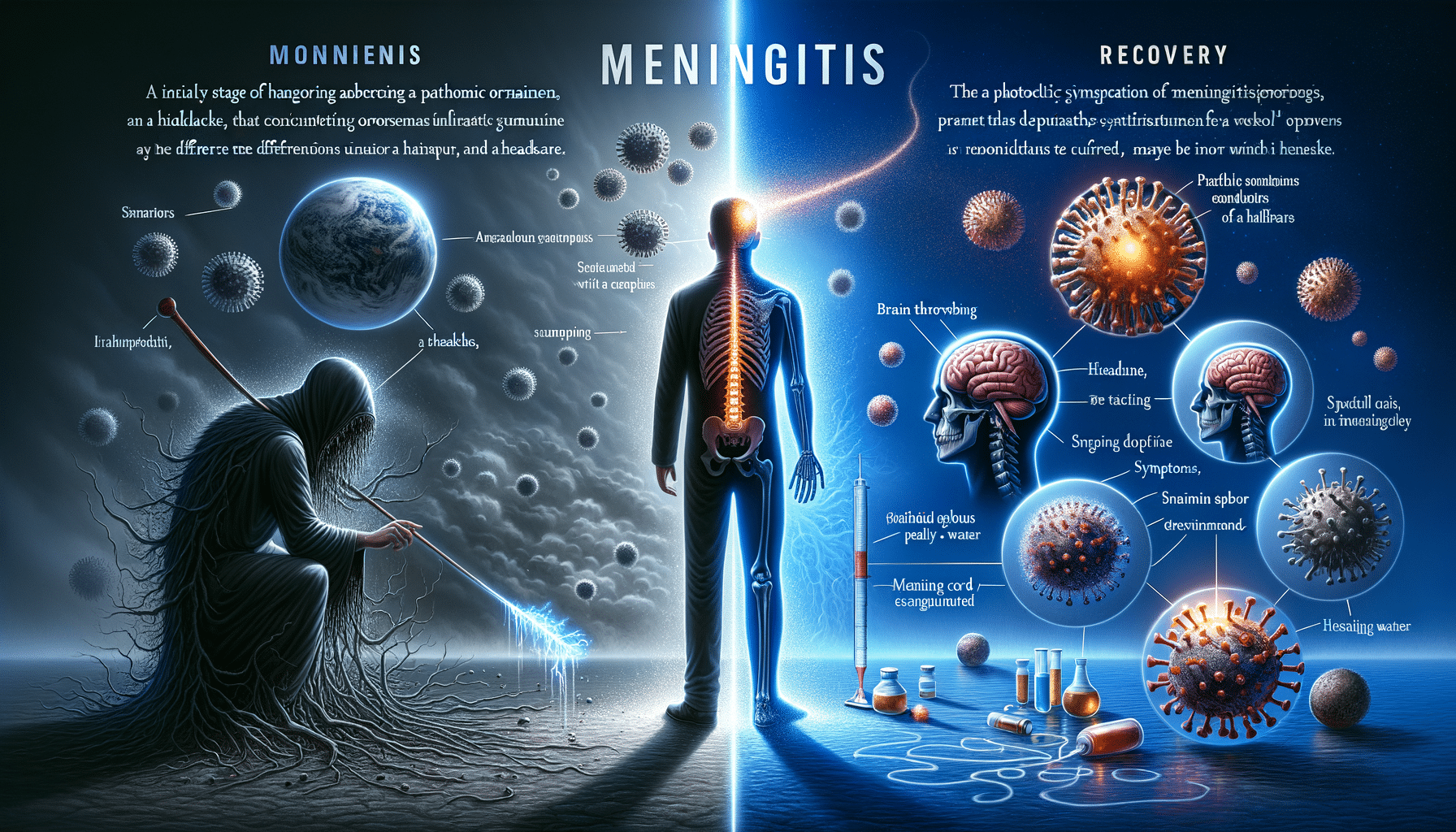
How to Recognize the Symptoms of Meningitis and Seek Treatment
How Does Someone Get Meningitis?
Meningitis is an inflammation of the protective membranes covering the brain and spinal cord, known collectively as the meninges. The condition can be caused by various pathogens, including bacteria, viruses, fungi, and parasites. The most common types are viral and bacterial meningitis, with bacterial being the more severe form. Transmission of these pathogens can occur through several means:
- Airborne droplets: Coughing and sneezing can spread bacteria or viruses from an infected person to others.
- Direct contact: Sharing personal items like utensils or toothbrushes can facilitate the spread.
- Close quarters: Living in crowded environments such as dormitories or military barracks increases risk.
While anyone can contract meningitis, certain groups are at higher risk. These include infants, young children, teenagers, and individuals with weakened immune systems. Vaccination is a critical preventive measure, particularly for bacterial meningitis, which can lead to severe complications if not treated promptly.
Why Meningitis is Different from a Headache
At first glance, meningitis may seem like a severe headache, but the two conditions are markedly different. While headaches are a common symptom of meningitis, they are accompanied by other specific signs that set the condition apart. Meningitis symptoms often include:
- Stiff neck: A hallmark of meningitis, this symptom is less common in typical headaches.
- Fever: High temperatures are often present, unlike most headaches.
- Photophobia: Sensitivity to light is more pronounced in meningitis.
- Nausea and vomiting: These are more prevalent in meningitis and are not typical of regular headaches.
The presence of these symptoms, especially in combination, should prompt immediate medical evaluation. Unlike headaches that can often be managed with over-the-counter medication, meningitis requires urgent medical intervention to prevent serious complications.
Meningitis vs Flu: The Ultimate Showdown
Distinguishing between meningitis and the flu can be challenging due to overlapping symptoms such as fever, headache, and fatigue. However, understanding the differences is crucial for timely diagnosis and treatment.
Meningitis tends to progress rapidly and can lead to severe complications if not treated promptly. It often presents with unique symptoms such as a stiff neck, photophobia, and confusion, which are not typical of the flu. The flu, on the other hand, is characterized by respiratory symptoms such as a cough, sore throat, and nasal congestion, which are absent in meningitis.
Another key difference lies in the onset and severity. Meningitis symptoms can escalate quickly, leading to life-threatening conditions. In contrast, the flu generally follows a more predictable course and can be managed at home unless complications arise.
Understanding these differences can aid in seeking appropriate medical care. When in doubt, especially if meningitis is suspected, it is always better to err on the side of caution and consult a healthcare professional.


